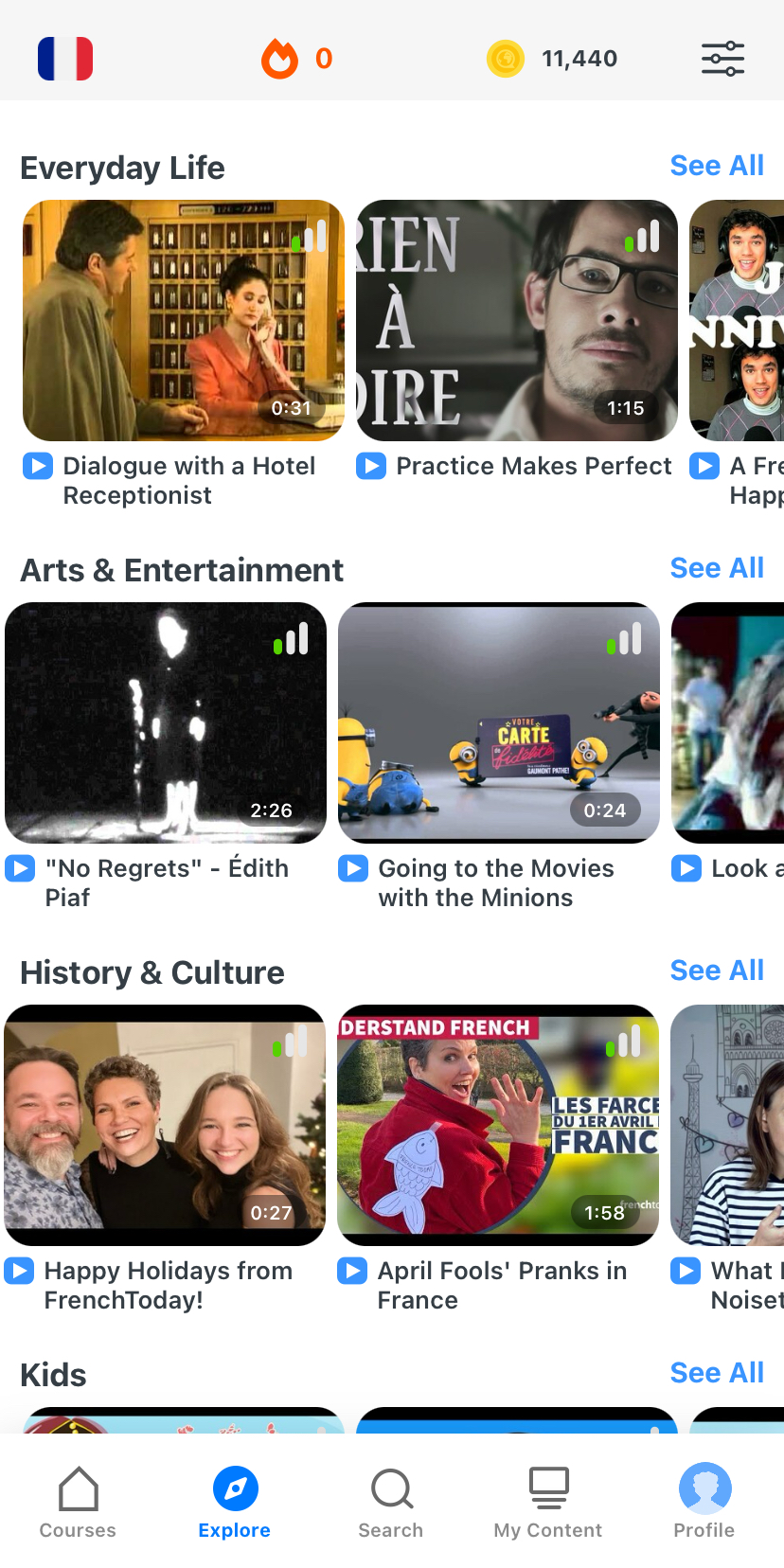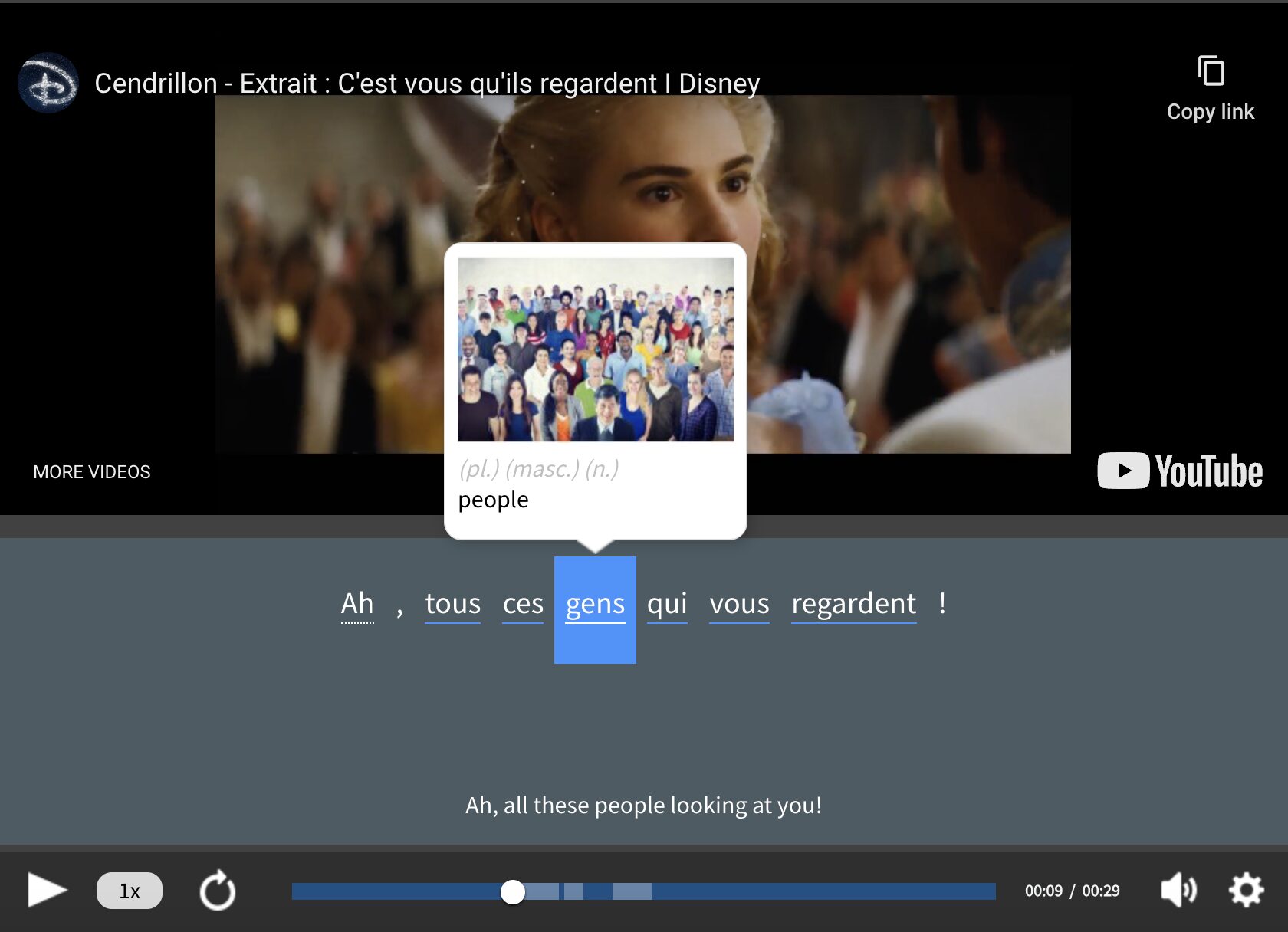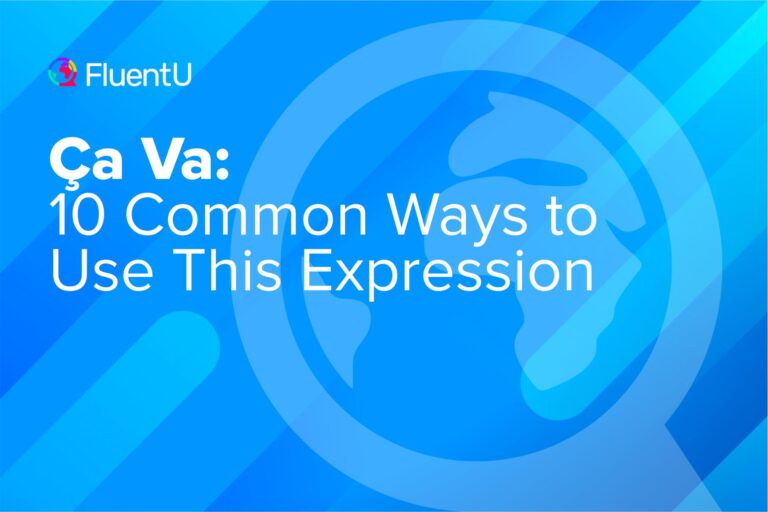Your Guide to French Relative Pronouns

Have you already managed to get the gist of formal French, mastered pronouncing the tricky u and ou sounds and got a system for memorizing new words?
Well done! Now it’s time to start using French pronouns in sentences, especially relative pronouns.
The 5 main relative pronouns in French are qui, que, lequel, dont and où.
Follow this guide to learn when and how to use French relative pronouns and what resources you can use to practice your new skills.
Download: This blog post is available as a convenient and portable PDF that you can take anywhere. Click here to get a copy. (Download)
Why to Use French Relative Pronouns
Relative pronouns connect two ideas, or clauses, without a conjunction like “and” or “but.”
Let’s look at an example:
J’aime le livre qui a la couverture rouge. (I like the book that has the red cover.)
In this case, there are two ideas.
The first is J’aime le livre (I like the book).
The second is a la couverture rouge (has the red cover).
This phrase has a verb—a from the verb avoir (to have) — and an object — la couverture rouge — but it also has an invisible subject: le livre (the book), which is understood to have a red cover.
So, how do we connect these two ideas without a conjunction?
You guessed it! With a relative pronoun!
Relative pronouns can replace subjects, direct objects, indirect objects and prepositions.
The translations to English are not exact for each pronoun, so instead of trying to link relative pronouns to English words, this blog post will explain where and why each is used.
Most Commonly Used Relative Pronouns
Qui and que are two of the most common relative pronouns, and they roughly translate to the English word “that.”
The relative pronoun que replaces a direct object whereas qui replaces the subject.
Let’s discuss each of them in more detail.
Que
Take a look at these two sentences:
Tu as le livre. J’aime ce livre. (You have the book. I like that book.)
In order to connect the two sentences, we must use a relative pronoun. By using one, we’ll replace the redundant usage of livre in the second clause.
In other words, we’ll use the relative pronoun que to replace the direct object (an object of the verb without a preposition):
Tu as le livre que j’aime. (You have the book that I like.)
Qui
Unlike que, qui is used to replace a subject.
Check out this example:
Elle achète le livre. Ce livre a 900 pages. (She buys the book. That book has 900 pages.)
In this example, we’ll still use the relative pronoun to replace the redundant use of the noun livre in the second sentence.
In this case, however, the noun livre in the dependent clause is not a direct object — it’s a subject. Because of this, we use the relative pronoun qui.
Elle achète le livre qui a 900 pages. (She buys the book that has 900 pages.)
The relative pronoun qui can also replace an indirect object after a preposition—with the exception of the pronoun de (of)—in most cases.
However, it can only replace indirect objects that are people.
Check out this example:
Monique est une femme. Je travaille avec Monique. (Monique is a woman. I work with Monique.)
In the second sentence, the noun Monique is the indirect object of the verb travailler (work) because it’s connected to the verb with the preposition avec (with).
To avoid repetition of the word Monique and to connect the two sentences, we move the preposition avec to the spot between the two phrases and add the relative pronoun qui:
Monique est une femme avec qui je travaille. (Monique is a woman who I work with.)
We’ll discuss the relative pronouns that can replace indirect objects in the next section.
Relative Pronouns Replacing Indirect Objects
Up until now, the majority of this post has talked about replacing subjects and direct objects. Well, what about indirect objects (objects that come after a preposition)?
Let’s just say you have some rules to follow.
Lequel
Lequel and its variants replace an indirect object after a preposition much in the same way qui does (again, de is a bit of an exception—we’ll get there).
The main difference here is that lequel is more commonly used with things than people. Secondly, it has variants: It changes its form depending on the gender and number of the indirect object.
Check out these examples:
Je vois le bureau sur lequel j’ai mis mon stylo. (I see the desk on which I put my pen.)
The indirect object bureau is masculine singular, so we use the relative pronoun lequel.
Je vois la cuillère avec laquelle je mange la soupe. (I see the spoon with which I eat the soup.)
The indirect object cuillère is feminine singular, so we use the relative pronoun laquelle.
Je vois les bureaux sur lesquels j’ai mis les stylos. (I see the desks on which I put the pens.)
The indirect object bureaux is masculine plural, so we use the relative pronoun lesquels.
Je vois les cuillères avec lesquelles nous mangeons la soupe. (I see the spoons with which we eat the soup.)
The indirect object cuillères is feminine plural, so we use the relative pronoun lesquelles.
Ready for more rules?
Not only do these relative pronouns change depending on the gender and number of the indirect object, but they also merge with the prepositions à (at) and de (of).
Check it out:
| à + lequel = | auquel (to which) |
| à + lesquels = | auxquels |
| à + lesquelles = | auxquelles |
| de + lequel = | duquel (of/from which) |
| de + lesquels = | desquels |
| de + lesquelles = | desquelles |
Two notes:
- The feminine singular of the indirect objects do not merge with the prepositions à and de: à laquelle and de laquelle do not merge.
- Duquel and its partners are only used when de is part of a prepositional phrase such as in the case of à côté de (beside) and près de (near). If it’s on its own, we use dont.
Other Relative Pronouns
Still with me? That was a lot to take in. Let’s look now at two other relative pronouns that are a little easier to follow.
Dont
I feel like after every mention of relative pronouns replacing an indirect object I’ve always said “with the exception of de.” Well, now it’s time for de to shine!
The relative pronoun dont replaces the preposition de and its indirect object.
Check out this example:
Où est le livre ? J’ai besoin du livre. (Where is the book? I need the book.)
This becomes:
Où est le livre dont j’ai besoin ? (Where is the book that I need?)
Où
Ready for a straightforward one? Où replaces locations. It also means “where.”
Check this out:
Voici la banque. Je travaille à la banque. (There is the bank. I work at the bank.)
This becomes:
Voici la banque où je travaille. (There is the bank where I work.)
Simple as pie!
Indefinite Relative Pronouns
Unlike the other relative pronouns I’ve already discussed that replace definite pronouns — ones introduced by a definite article like le, la or les (the), there are relative pronouns that can replace nouns with indefinite pronouns.
This means that these relative pronouns do not reference a specific noun that they replace.
Check them out:
Ce qui m’intéresse, c’est la langue française. (What interests me is the French language.)
Ce qui is the indefinite relative pronoun for the subject position. It literally translates to “that which.”
Sais-tu ce que j’ai fait ? (Do you know what I did?)
Ce que is the indefinite relative pronoun for the direct object position.
Sais-tu ce dont Louis parle ? (Do you know what Louis is talking about?)
Ce dont is the indefinite relative pronoun for indirect objects with the preposition de.
FluentU takes authentic videos—like music videos, movie trailers, news and inspiring talks—and turns them into personalized language learning lessons.
You can try FluentU for free for 2 weeks. Check out the website or download the iOS app or Android app.
P.S. Click here to take advantage of our current sale! (Expires at the end of this month.)
How to Practice French Relative Pronouns
That’s all a lot to take in, but, as they say, practice makes perfect.
You can try some quizzes that look at specific types of relative pronouns, like indefinite relative pronouns, and then try your hand at some that test both at the same time.
Columbia and Language Guide have some more great ones.
Here you have a complete guide to using French relative pronouns. Keep at it, and theory will become practice in no time!
Download: This blog post is available as a convenient and portable PDF that you can take anywhere. Click here to get a copy. (Download)
And One More Thing...
If you like learning French at your own pace and from the comfort of your device, I have to tell you about FluentU.
FluentU makes it easier (and way more fun) to learn French by making real content like movies and series accessible to learners. You can check out FluentU's curated video library, or bring our learning tools directly to Netflix or YouTube with the FluentU Chrome extension.
One of the features I find most helpful is the interactive captions—you can tap on any word to see its meaning, an image, pronunciation, and other examples from different contexts. It’s a great way to pick up French vocab without having to pause and look things up separately.
FluentU also helps reinforce what you’ve learned with personalized quizzes. You can swipe through extra examples and complete engaging exercises that adapt to your progress. You'll get extra practice with the words you find more challenging and even be reminded you when it’s time to review!
You can use FluentU on your computer, tablet, or phone with our app for Apple or Android devices. Click here to take advantage of our current sale! (Expires at the end of this month.)











